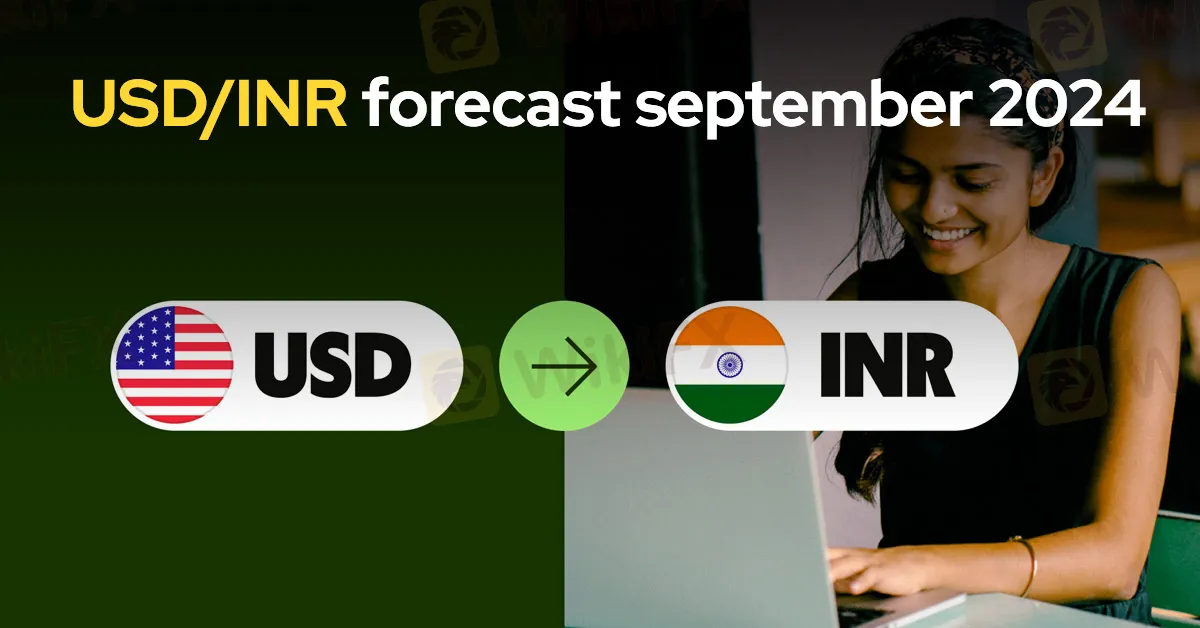简体中文
繁體中文
English
Pусский
日本語
ภาษาไทย
Tiếng Việt
Bahasa Indonesia
Español
हिन्दी
Filippiiniläinen
Français
Deutsch
Português
Türkçe
한국어
العربية
USD/INR Monthly Forecast: September 2024
Abstract:The USD/INR currency pair has exhibited significant volatility, staying near the higher end of its long-term price range. Since early March, the pair has consistently set new peaks and ventured into higher-price territories.

According to report, the USD/INR currency pair has exhibited significant volatility, staying near the higher end of its long-term price range. Since early March, the pair has consistently set new peaks and ventured into higher-price territories. On August 5th, the USD/INR briefly surged above the 84.1000 mark, driven by exaggerated reactions in the Asian markets to USD/JPY fluctuations and a selloff in Japan's Nikkei index. However, market stability quickly returned, and the pair settled back to more familiar values within a day.
Interestingly, after the rapid August 5th spike, the USD/INR did not revert to its previous price levels. Instead, the 83.7700 area lost its support, and the 83.8600 zone began to provide new support. This change persisted until around August 16th, when the pair tested slightly lower values. A notable low of 83.6820 was recorded on August 20th before it swiftly rebounded.
Mid-August Lows and Market Reactions
The mid-August low may have led some traders to speculate that the Reserve Bank of India (RBI) might soon alter its policies to strengthen the Indian Rupee. However, this did not materialize. Despite broader forex market trends showing USD weakness, the USD/INR has maintained its elevated price range. This behavior suggests that the RBI might be tolerating higher levels in the USD/INR, possibly to test market reactions or manage inflationary pressures.
Outlook for September
The persistence of the USD/INR near the 83.9000 level indicates more than just random fluctuations. It reflects a strategic stance by the RBI, potentially hinting at a higher price range tolerance for the pair. The Indian government may be balancing the benefits of a weaker Rupee—such as boosting export demand—with the inflationary consequences it brings. As September approaches, it remains to be seen whether the USD/INR will continue to test resistance levels or if the Indian government will take action to address the currency's strength.

Disclaimer:
The views in this article only represent the author's personal views, and do not constitute investment advice on this platform. This platform does not guarantee the accuracy, completeness and timeliness of the information in the article, and will not be liable for any loss caused by the use of or reliance on the information in the article.
Read more

CryptoCurrency Regulations in India 2025 – Key Things You Should Know
Cryptocurrency has become a major trend in today’s world. Crypto Experts believe it’s the future, which is why many people are investing heavily in it. But before jumping in, it’s important for crypto enthusiasts to understand the key rules about cryptocurrency in India.

Global Brokers Vs. Indian Rules: Why They Struggle in India
RBI issued a warning last year against 75 forex brokers. Those brokers are globally popular and regulated in other countries, but they are banned in India. Only few brokers even have physical offices located in India. So, why do global brokers face so many challenges in entering the Indian market?

Tokenized Stocks: Innovation or Just Another Wrapper?
While tokenized stocks promise global, round-the-clock trading, many platforms only offer synthetic exposure similar to CFDs. Without shareholder rights or deep liquidity, their added value remains in question.

Crypto Craze Fizzling Out? Here is Why
The Crypto Craze among users is fading out. The wave of Cryptocurrency has slowed down. But what are the major reasons why this has happened?
WikiFX Broker
Latest News
Forex Hedging: Is It a Trader’s Safety Net or Just an Illusion?
OPEC+ members agree larger-than-expected oil production hike in August
FCA clarifies expectations on bullying, harassment and violence to deepen trust in financial service
Asia-Pacific markets mixed after Trump shifts goalposts on tariffs again
XS.com Expands Global Reach with Landmark Kuwait Launch
European markets set to open mixed amid fresh U.S. tariff threats
Top Wall Street analysts are pounding the table on these 3 stocks
Stock futures fall after Trump team says tariffs will go into effect on Aug. 1: Live updates
Goldman Sachs revamps Fed interest rate cut forecast for 2025
Gold Prices to Fluctuate This Week Amid July 9 Tariff Deadline, Fed Policy
Currency Calculator


